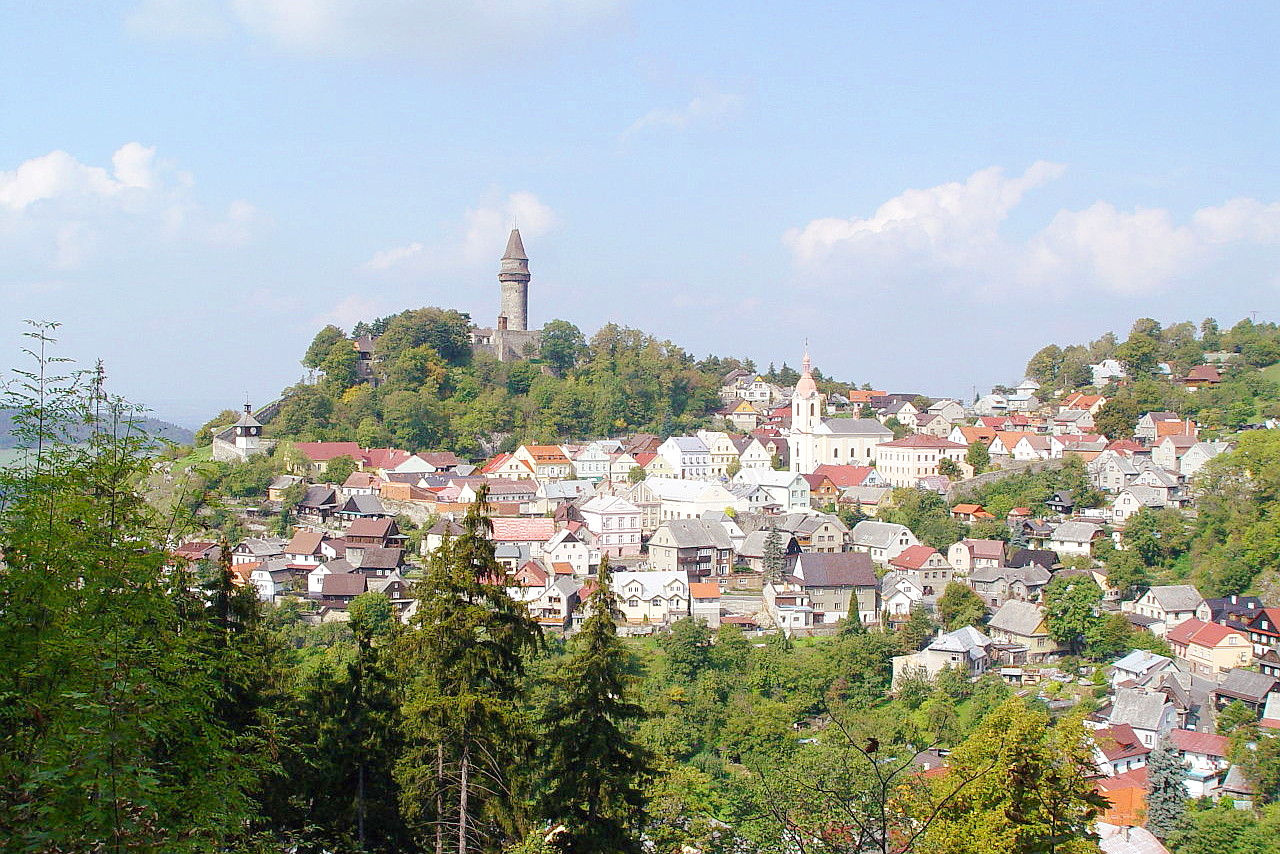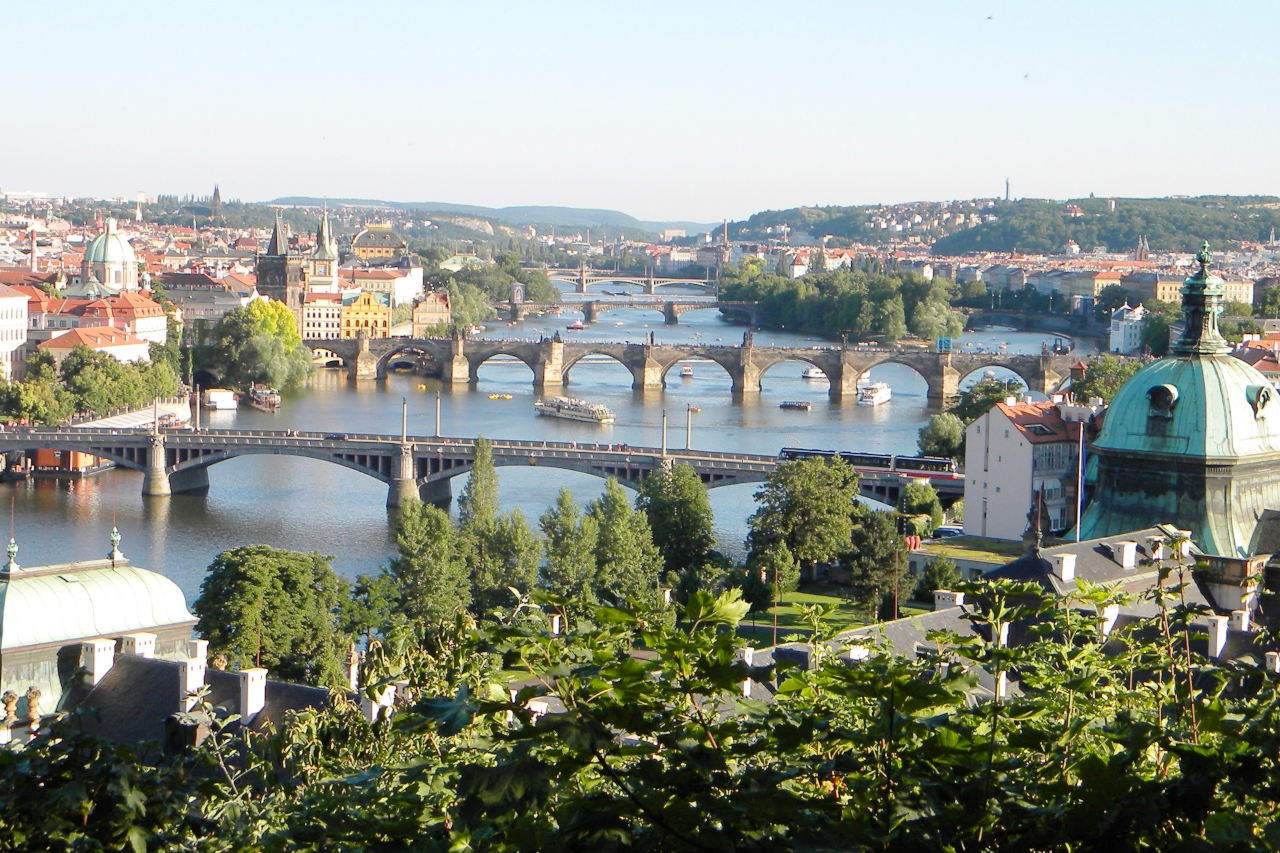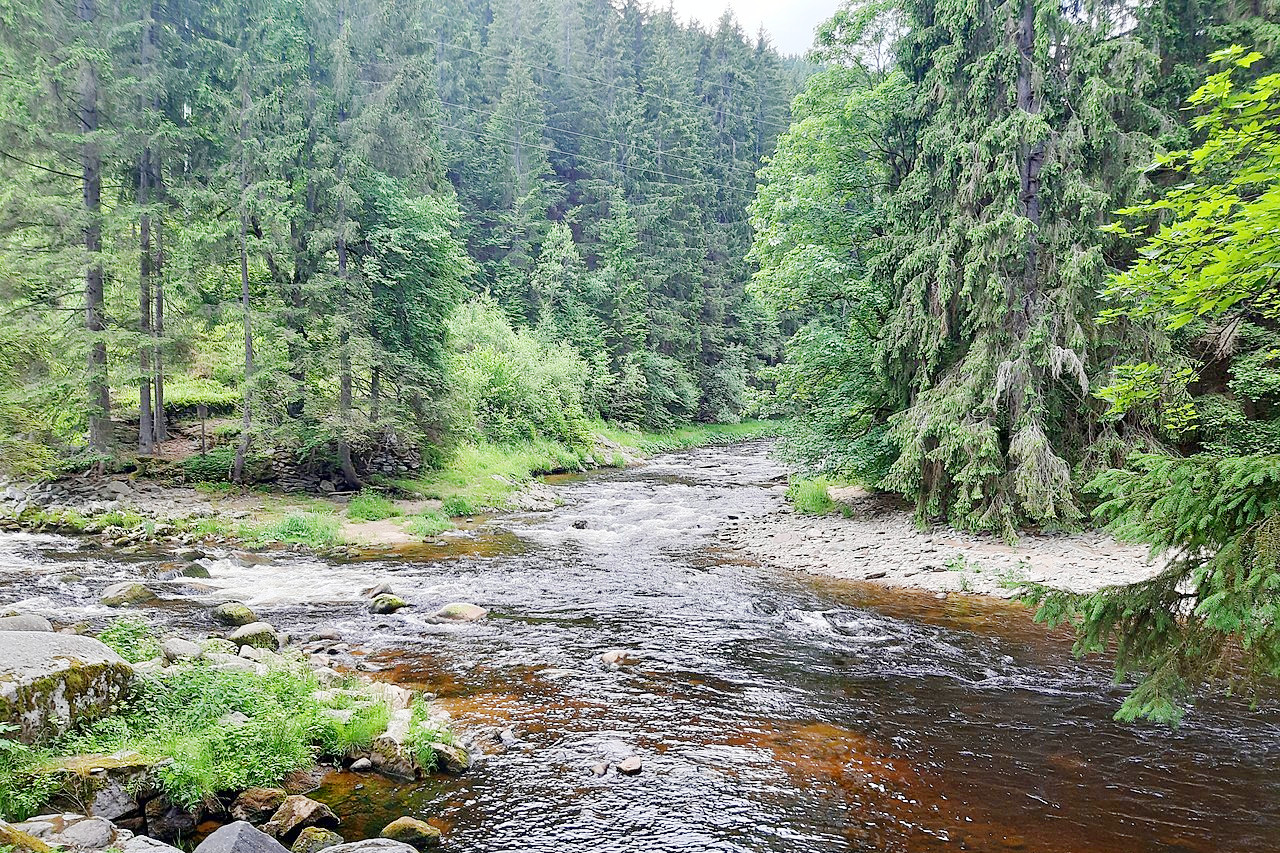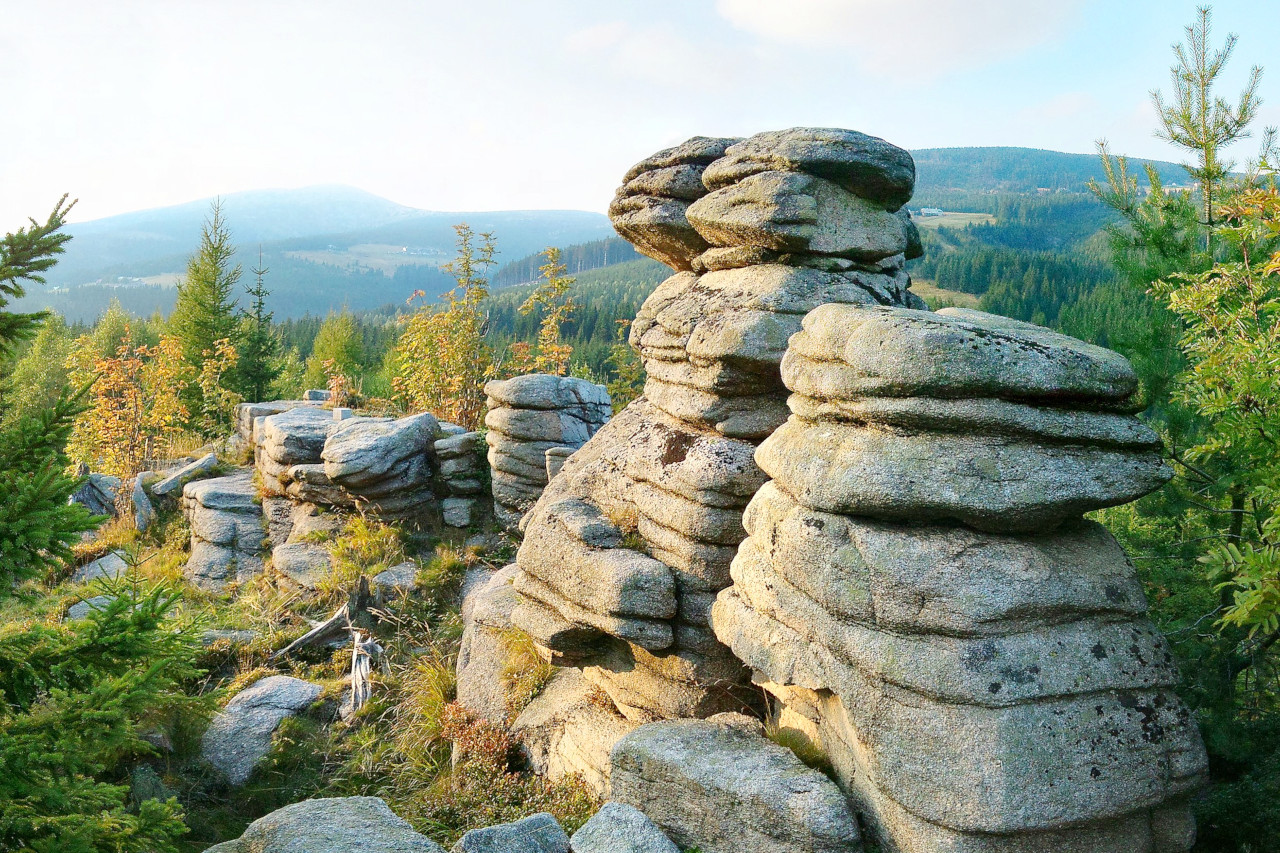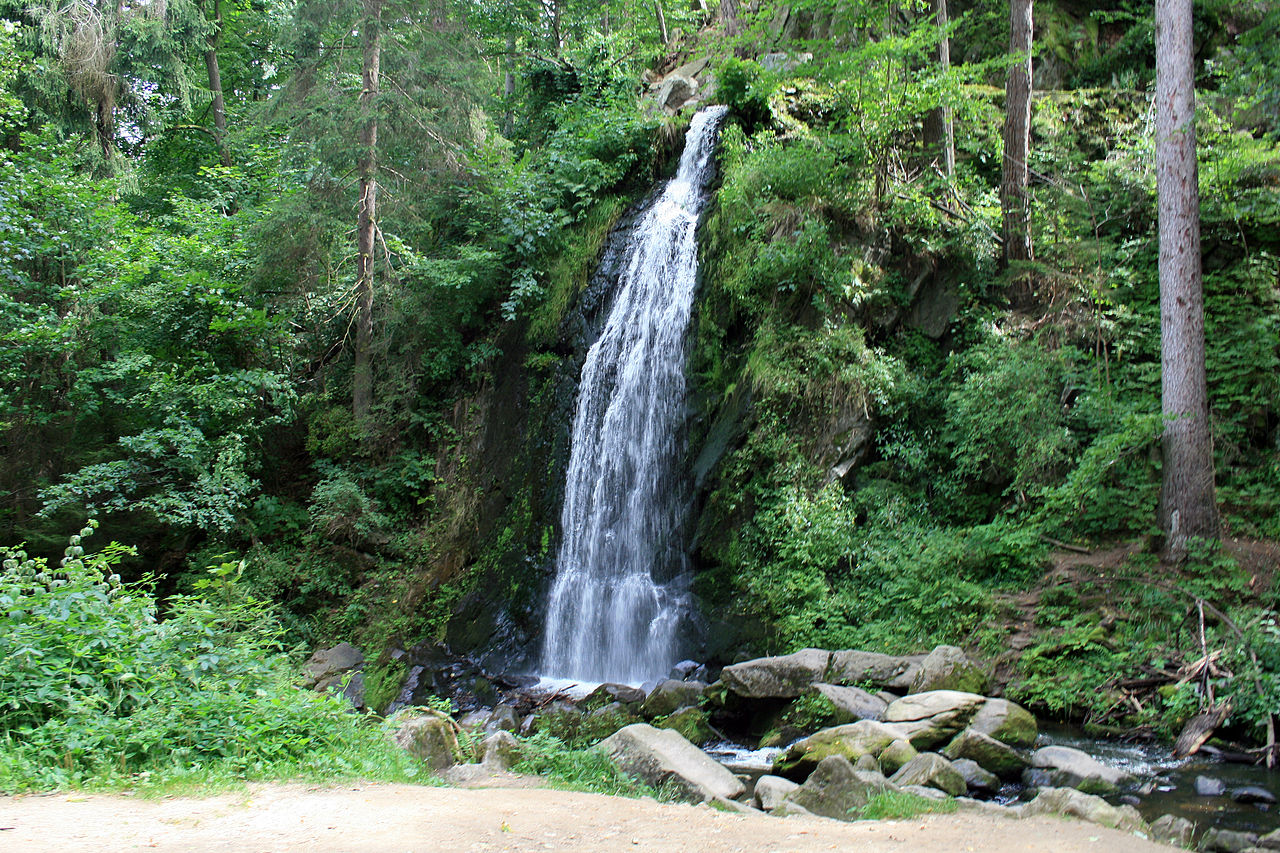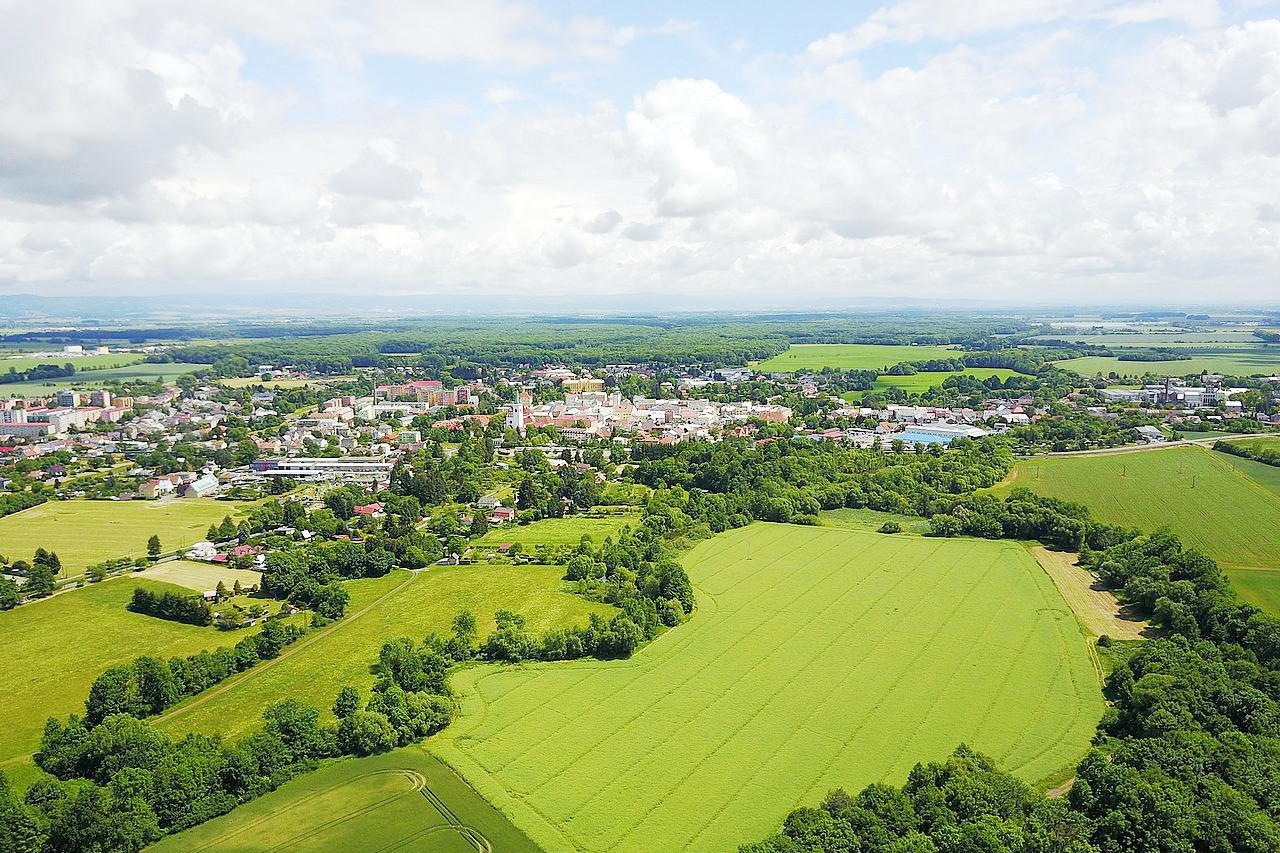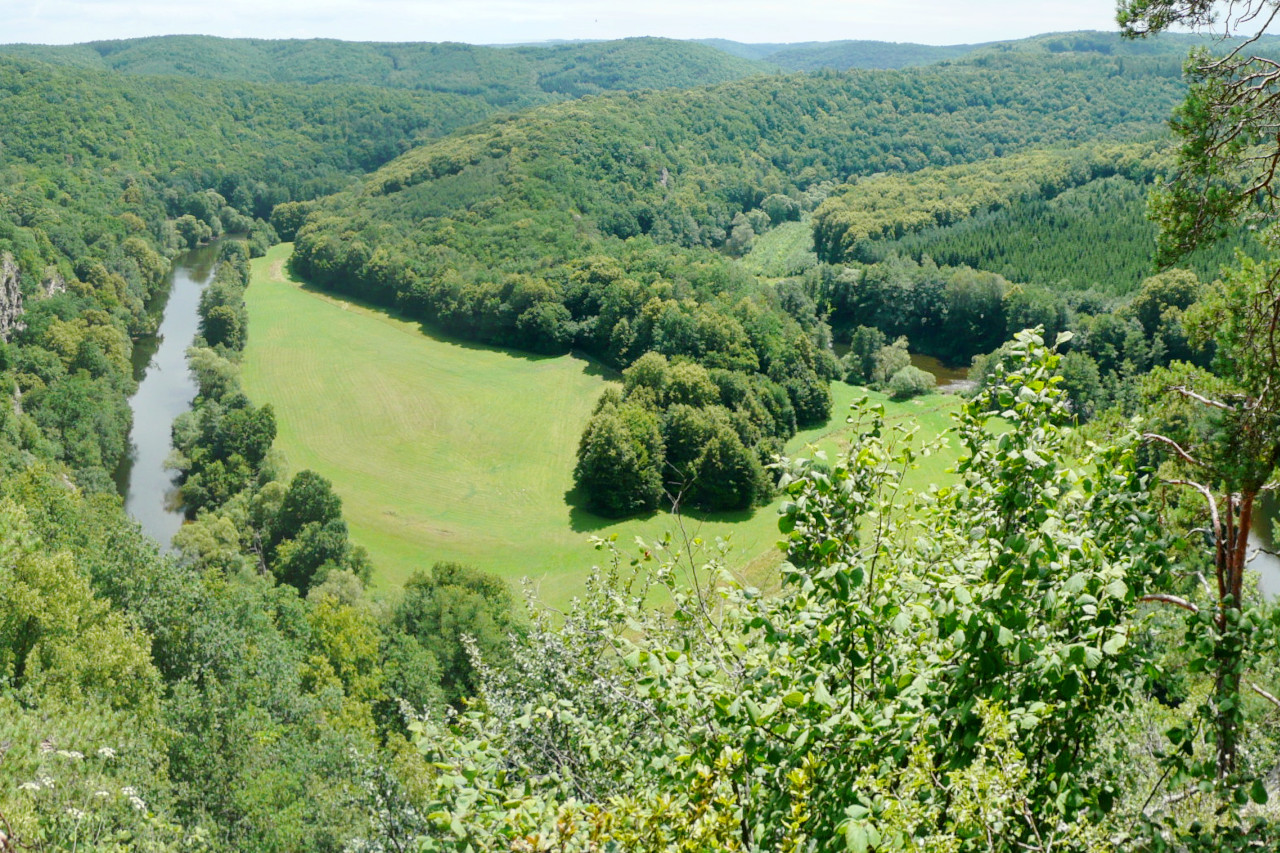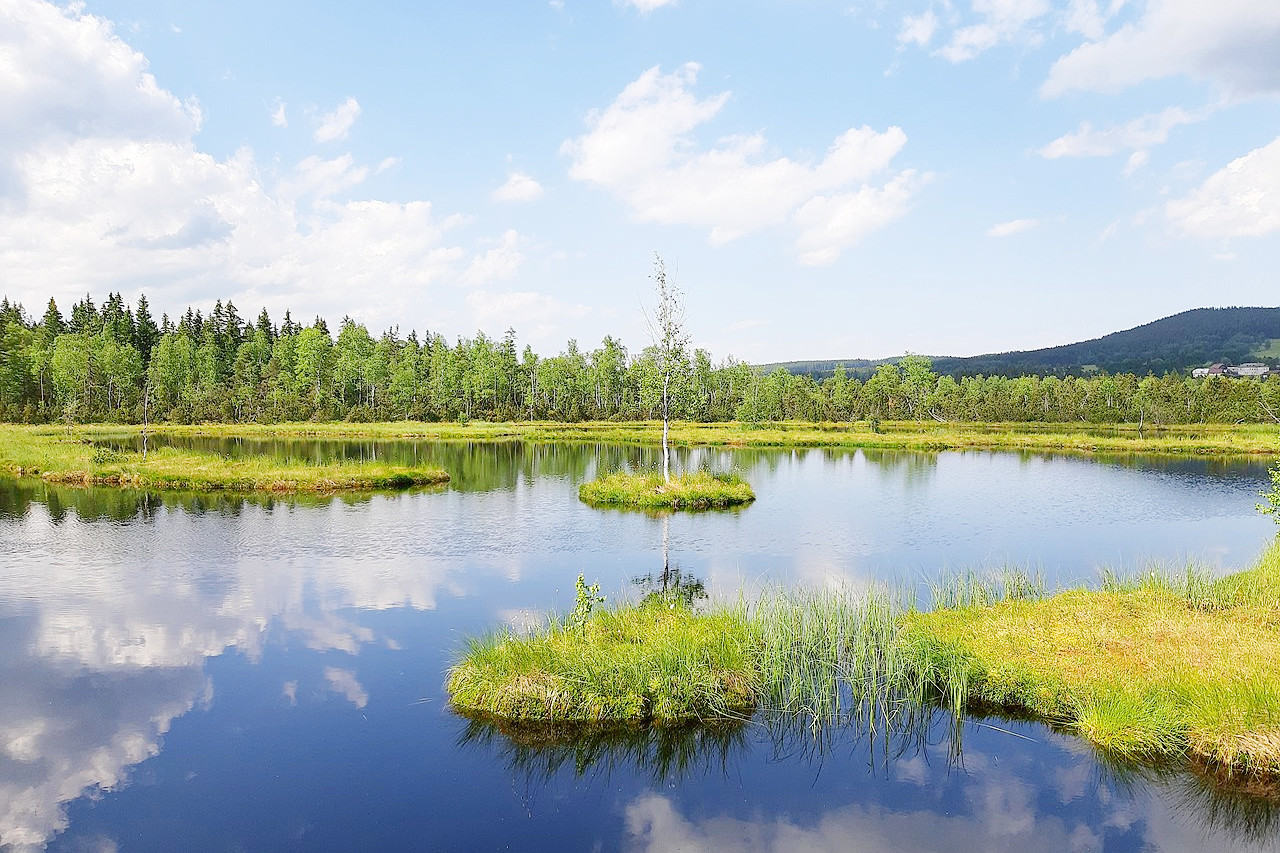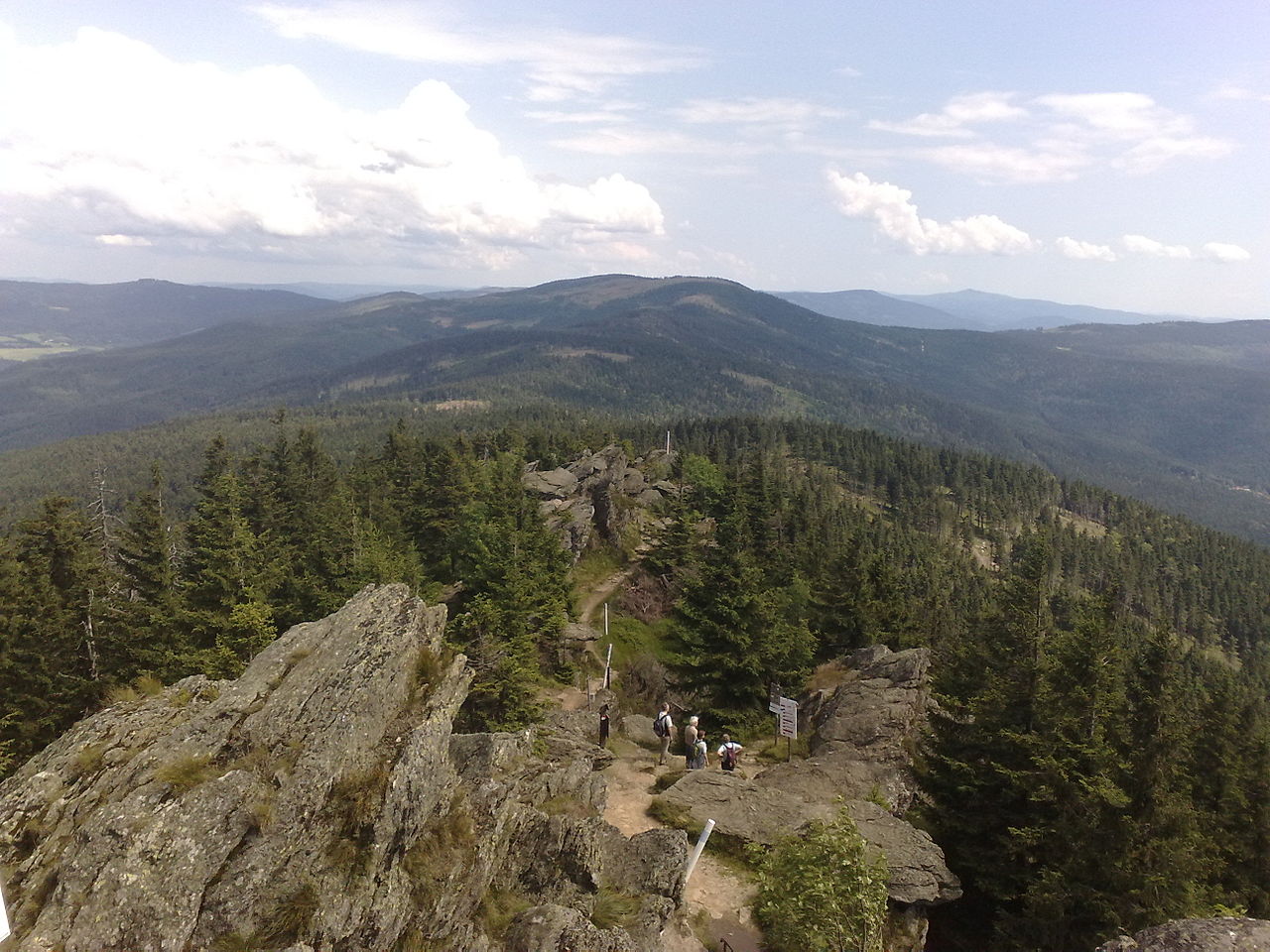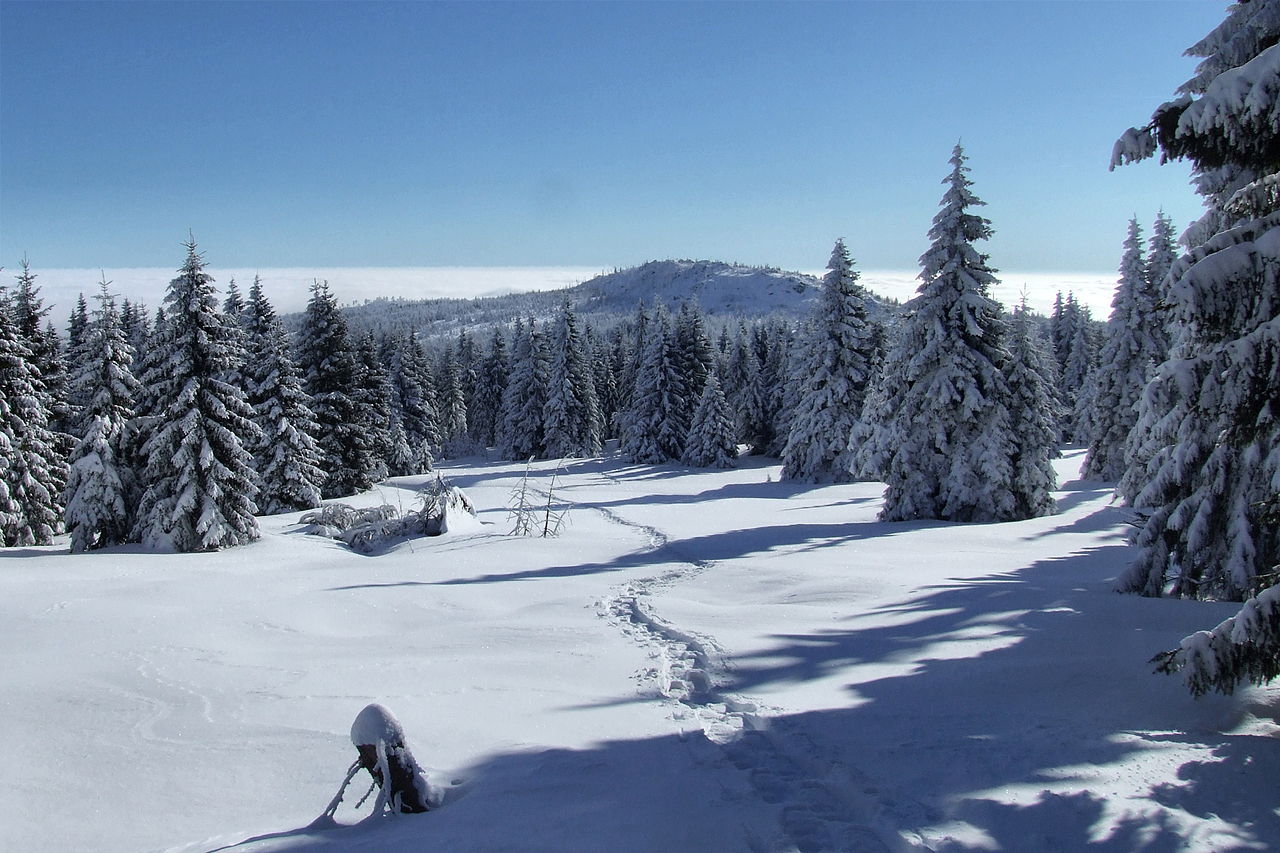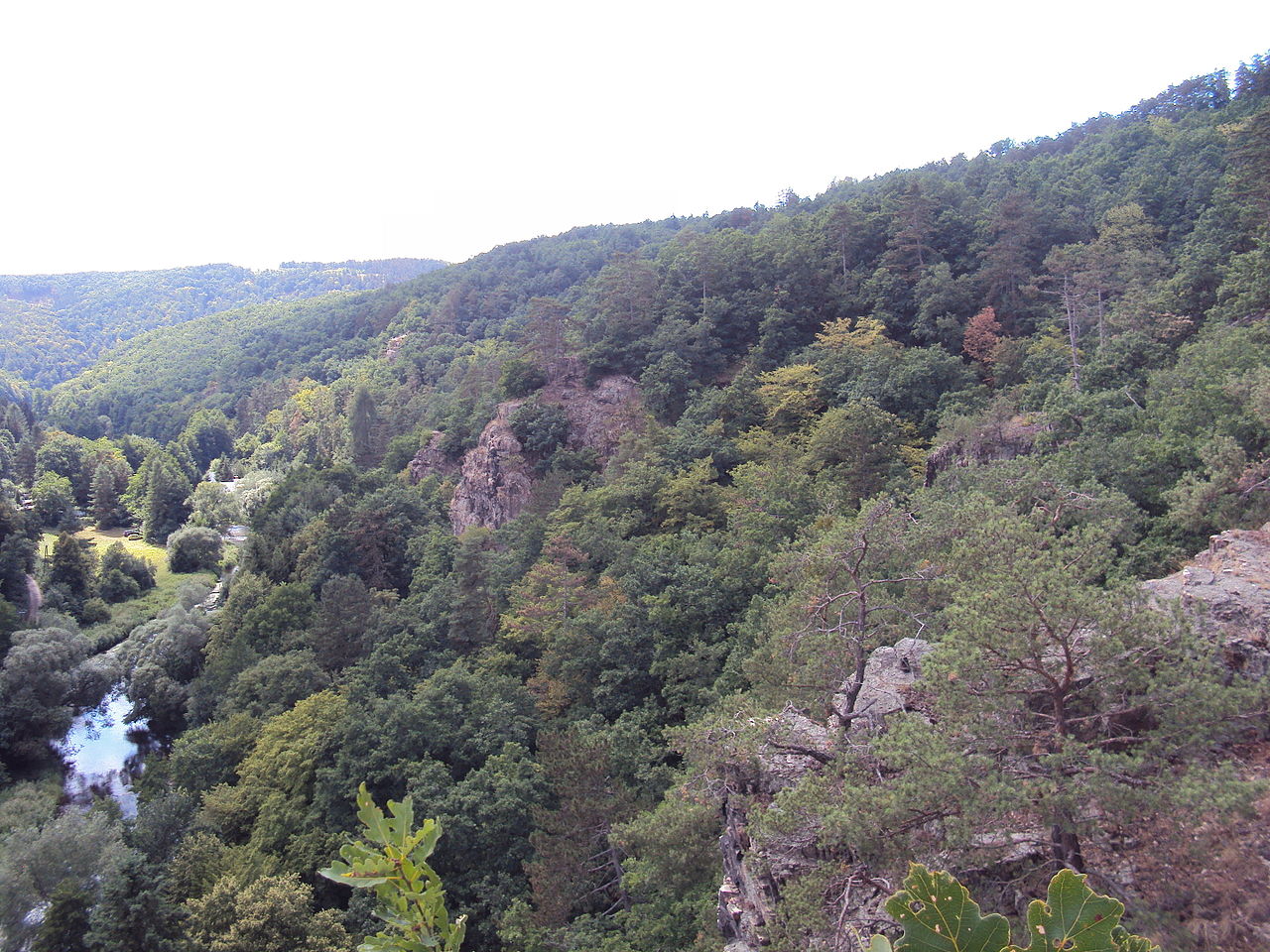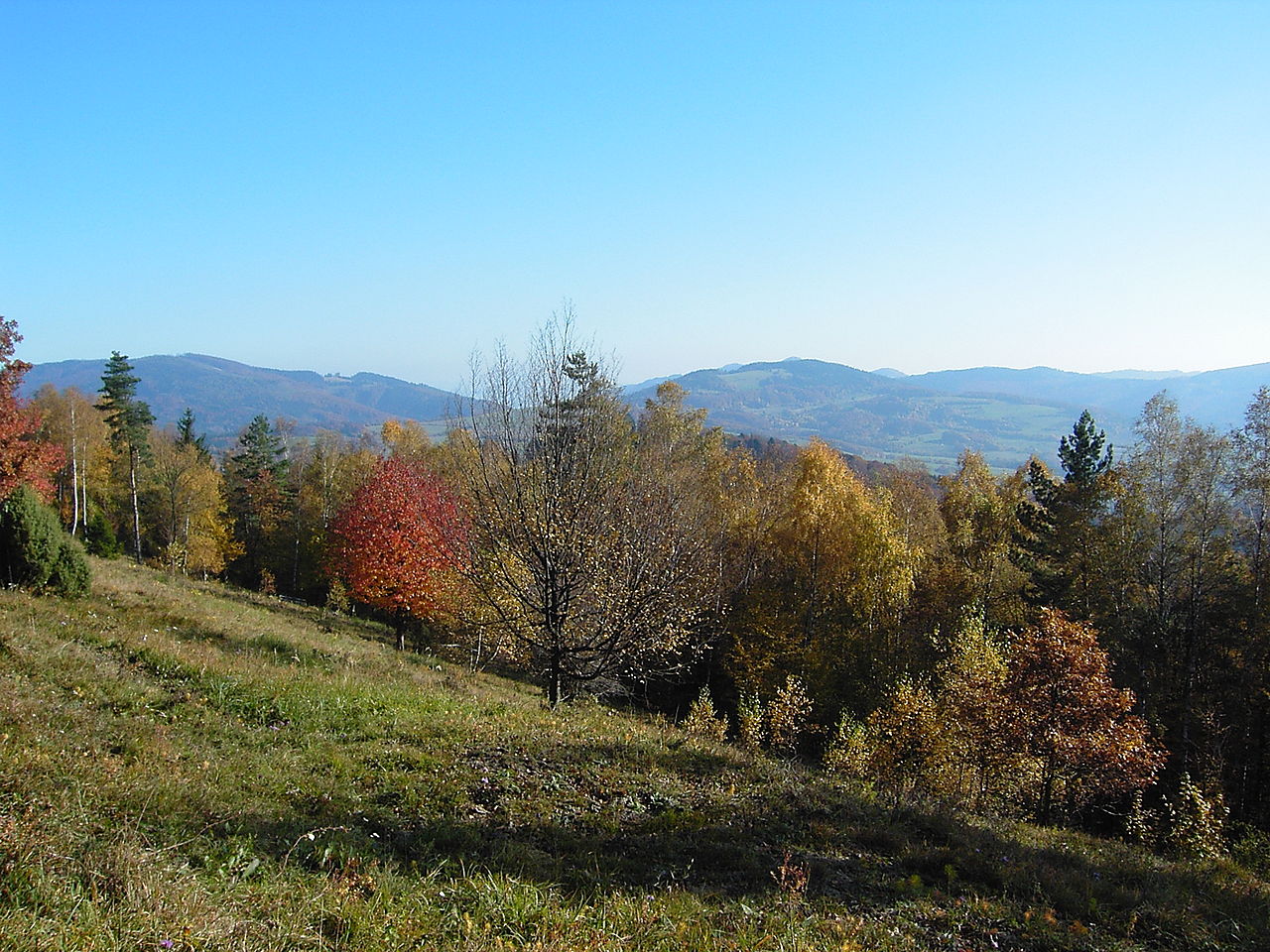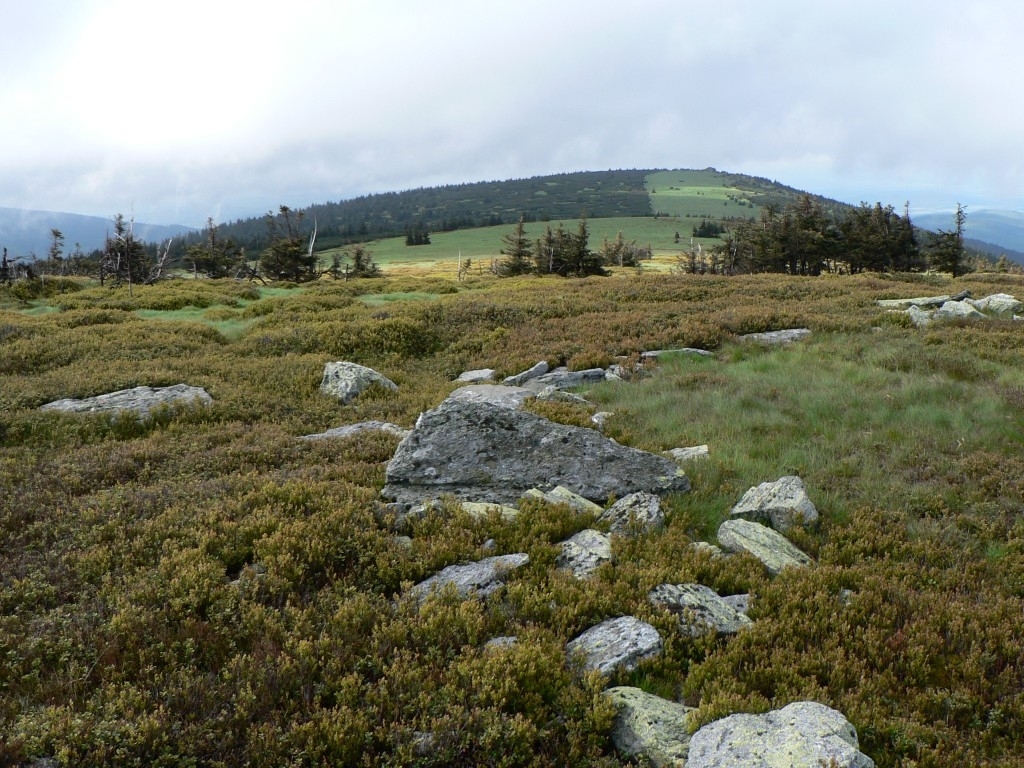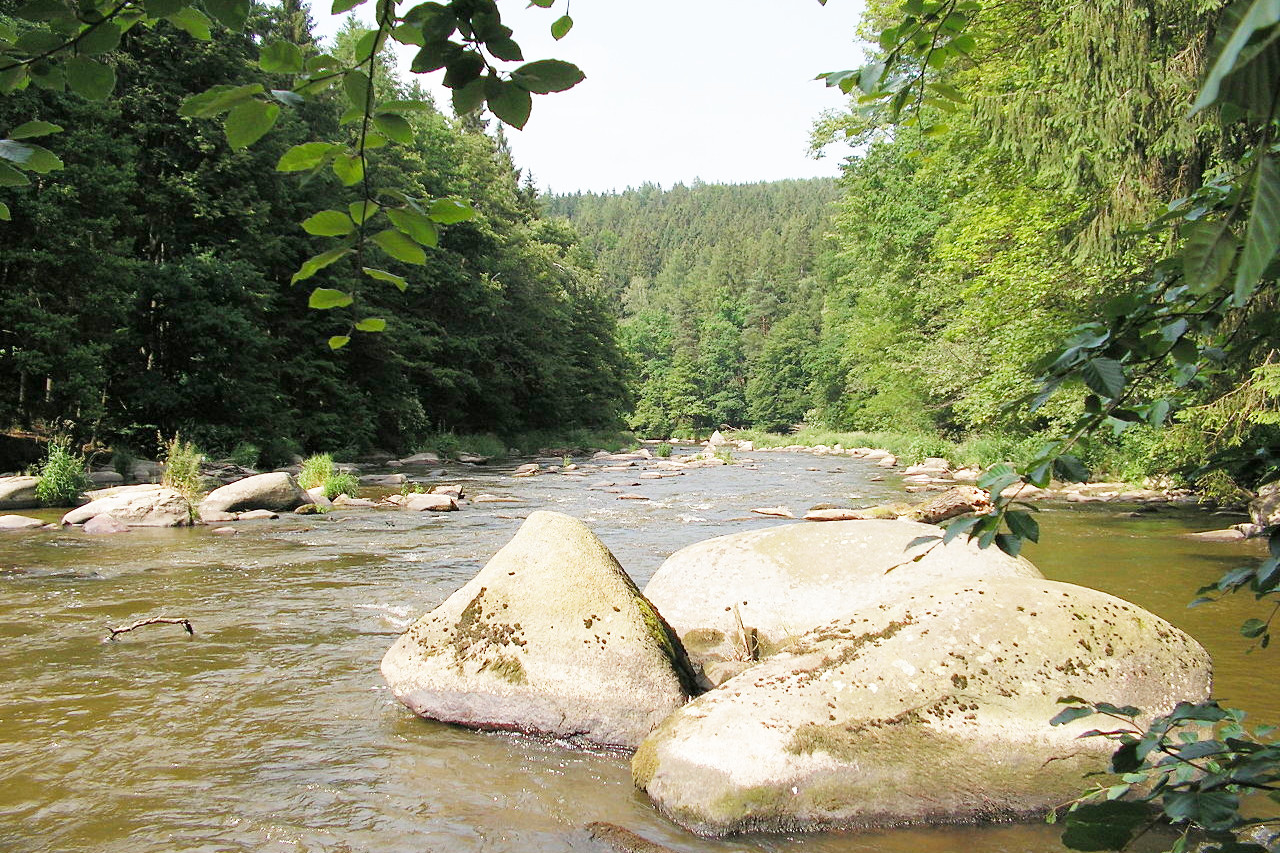The Geography of the
Czech Republic
Why visit the Czech Republic?
The Czech Republic has many attractions that make it a great destination. The landscape of the Czech Republic is incredibly varied, from soaring snow-capped peaks in the Bohemian Forest to the rolling green hills of the Central European Plain. There are many rivers and lakes, and the countryside is dotted with picturesque villages and small towns, most of which boast some sort of historic interest. Prague itself—once an unassuming provincial city—boasts elegant Gothic churches, lively cafes and a cultural life that rivals any big city in Europe. There are many things to see and do in the country, and everyone should visit it at least once in their lifetime.
Contents
Map
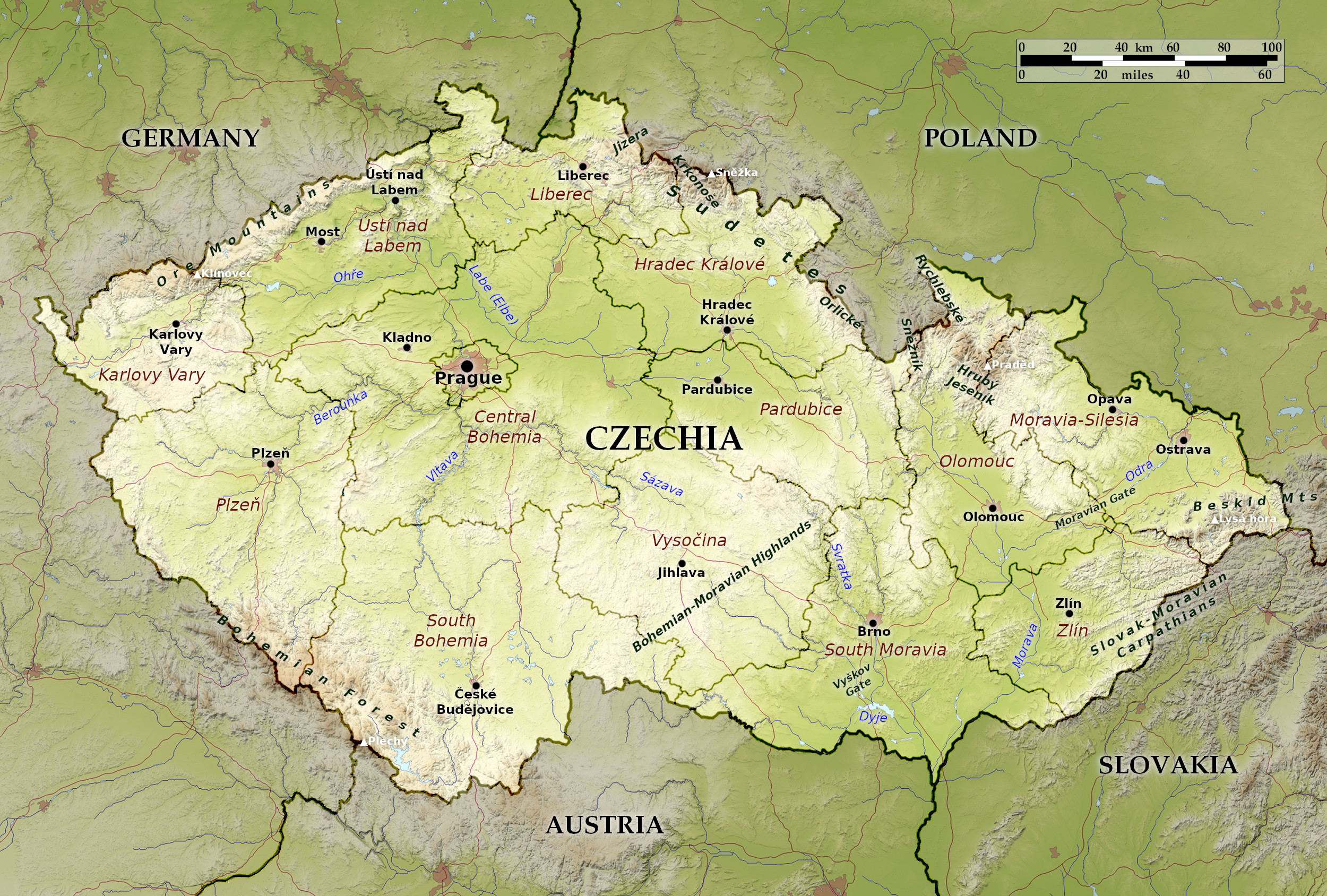 Relief map of the Czech Republic
Relief map of the Czech Republic
What is the landscape of the Czech Republic like?
The Czech Republic consists of two major regions—Bohemia to the west and Moravia to the east, with Bohemia being around twice as large as Moravia.
Bohemia
Bohemia is a highland region, for the most part an undulating plateau enclosed on all sides by lofty mountains. The chief river plain is the Labe (Elbe) which flows into Germany, ultimately draining into the North Sea. But the principal river of Bohemia, from the Czech point of view, is the Vltava, which flows from the south, and is the Czech Republic's longest river. Prague, the capital, is picturesquely situated on the Vltava and famous for its architectural beauty.
The Šumava Mountains (or Bohemian Forest) lie to the southwest along the border with Austria and Germany. The beauty of this range of mountains consists in its pure crystal rivers, in the numerous blue lakes of its valleys, and above all in the magnificent forests of oak and pine with which its sides are covered.
The northwestern border with Germany is formed by the Ore Mountains (Czech: Krušné hory). The numerous old mining villages, and the easy passes traversed by good roads, give those mountains in many places the aspect of a hilly plain. Several of the villages are built very near the summit of the mountains, and one of them, Boží Dar, lies at an altitude of 1,028 meters (3,373 feet), the highest town in the Czech Republic.
The north-east border with Poland is formed by the Sudetes Mountains. The main subrange are the Krkonoše (or Great) Mountains, which are, after the Alps, among the highest mountains of central Europe. The country’s highest mountain, Mount Sněžka at 1,602 meters (5,256 feet), is found here.
 Przełęcz Karkonoska in the Krkonoše mountains
Przełęcz Karkonoska in the Krkonoše mountains
To the southeast are the Bohemian-Moravian Highlands which separate Bohemia from Moravia. These are a plateau or broad series of low hills, and reaching in some places a height of 800 meters (2600 feet). In the southern part of Bohemia, near České Budějovice, is a large region of artificial lakes and fish ponds.
Moravia
Moravia is a hilly plateau sloping from north to south, bordered by scattered ranges of hills and mountains. The central and southern Moravian lowlands are similar to the lowlands they join in southern Slovakia. The dominant feature is the valley of the Morava River, the principal river of Moravia, which flows southward, and empties into the Danube in Slovakia.
Moravia is surrounded by mountains. These include the White Carpathians (Bílé Karpaty), the Beskids (Beskydy), and the Maple Mountains (Javorníky) in the east, which mark the eastern border of the country with Slovakia.
In the northeastern corner of this area is part of Silesia, a region that lies mostly in southwestern Poland. This region is marked by the Jeseníky Mountains, and by the Odra (or Oder) River flows north to Poland, draining into the Baltic Sea. The Odra valley is known as the Moravian Gate—an ancient routeway from the North European Plain to central Europe.
What is the nature of the Czech Republic like?
Although a small country, the Czech Republic has dense forests, and a lot of wildlife is packed within its borders.The Czech Republic is heavily forested, and the country's scenery varies dramatically from limestone caves and natural springs to mountain ranges and numerous rivers. Over one third Czech Republic is covered with forest. Spruce and beech forests cover the mountains of the country, and deciduous trees such as oak, ash, beech, and maple are widespread elsewhere. Original steppe grassland areas are still found in Moravian lowlands. Wild grasses, clover, and reeds are common along the riverbanks.
The Czech Republic is rich in wildlife. Bears can still be found in some mountain regions, and there are wolves, lynxes, foxes, wild boar, wildcats, otters, martens, and deer. The chamois, a small mountain antelope, is a protected species, whose numbers are increasing, and the country is also home to the mouflon, a mountain sheep.
What is the climate of the Czech Republic like?
See our main article: The Climate of Czechia
The Czech Republic has a mostly continental climate. Summers are very warm but winters are cold with temperatures often dropping below -15°C (5°F). In summers the daytime temperature averages between 20°C to 28°C (70°F to 80°F) but will often peak above above 30°C (86°F) especially in Moravia.
Rainfall is generally heaviest in the spring and summer, with the mountains along the borders receiving the most rain. The winter months are slightly drier, with 40 to 100 days of snow in the lowlands, and 130 days of snow in the mountains.
| Climate data for Prague (1981–2010) | |||||||||||||
|---|---|---|---|---|---|---|---|---|---|---|---|---|---|
| Month | Jan | Feb | Mar | Apr | May | Jun | Jul | Aug | Sep | Oct | Nov | Dec | Year |
| Average high °C (°F) | 2.6 (36.7) | 4.4 (39.9) | 9.1 (48.4) | 15.1 (59.2) | 20.3 (68.5) | 22.8 (73.0) | 25.3 (77.5) | 25.1 (77.2) | 19.9 (67.8) | 14.2 (57.6) | 7.2 (45.0) | 3.4 (38.1) | 14.1 (57.4) |
| Daily mean °C (°F) | 0.1 (32.2) | 1.3 (34.3) | 5.3 (41.5) | 10.1 (50.2) | 15.0 (59.0) | 17.8 (64.0) | 19.9 (67.8) | 19.6 (67.3) | 15.2 (59.4) | 10.3 (50.5) | 4.6 (40.3) | 1.1 (34.0) | 10.0 (50.0) |
| Average low °C (°F) | −2.4 (27.7) | −1.8 (28.8) | 1.5 (34.7) | 5.1 (41.2) | 9.7 (49.5) | 12.7 (54.9) | 14.5 (58.1) | 14.2 (57.6) | 10.5 (50.9) | 6.4 (43.5) | 2.1 (35.8) | −1.1 (30.0) | 6.0 (42.7) |
| Average precipitation mm (inches) | 34 (1.3) | 30 (1.2) | 40 (1.6) | 34 (1.3) | 63 (2.5) | 70 (2.8) | 82 (3.2) | 75 (3.0) | 47 (1.9) | 34 (1.3) | 40 (1.6) | 38 (1.5) | 587 (23.1) |
| Average snowfall cm (inches) | 17.9 (7.0) | 15.9 (6.3) | 10.3 (4.1) | 2.9 (1.1) | 0.0 (0.0) | 0.0 (0.0) | 0.0 (0.0) | 0.0 (0.0) | 0.0 (0.0) | 0.1 (0.0) | 8.4 (3.3) | 15.9 (6.3) | 71.4 (28.1) |
| Source: World Meteorological Organization and Weather Atlas | |||||||||||||
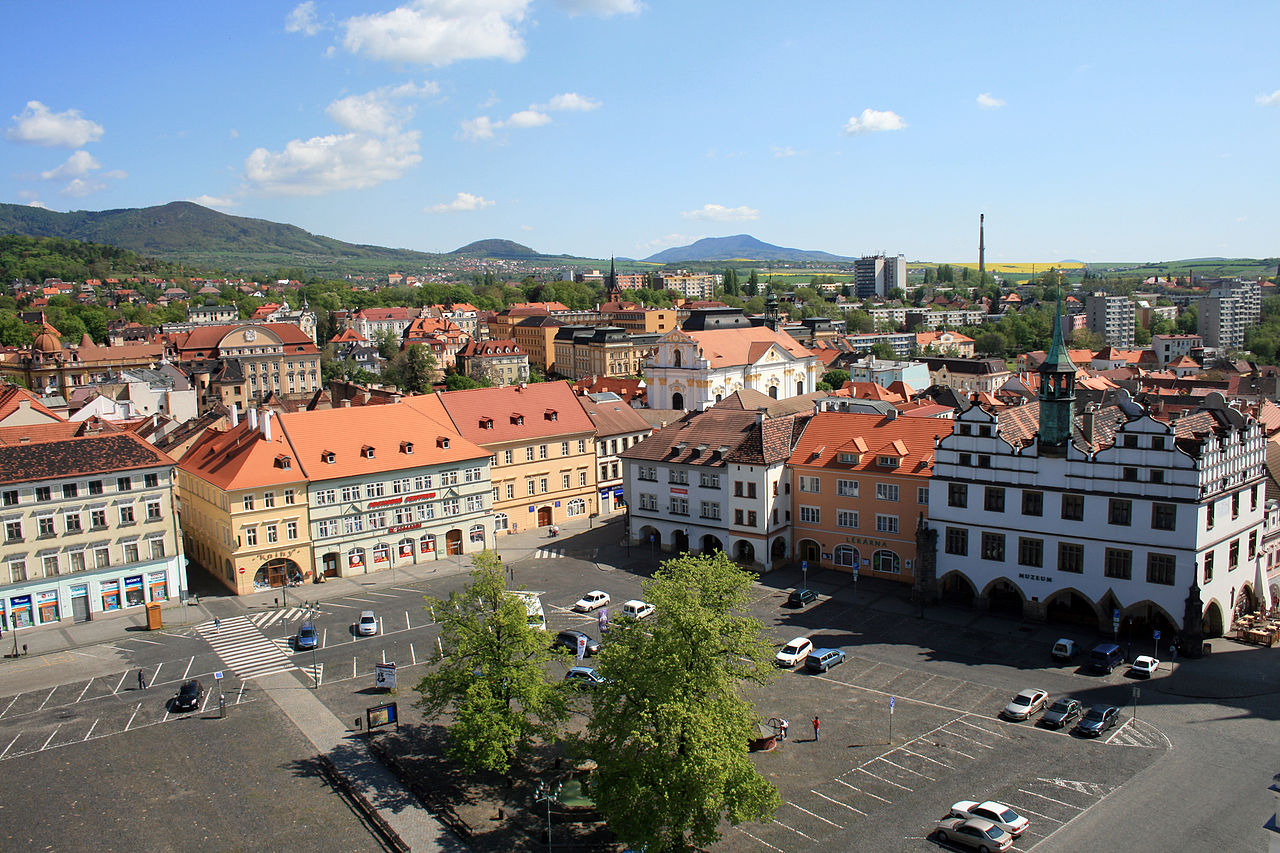 Litoměřice, Ústí nad Labem, Czech Republic
Litoměřice, Ústí nad Labem, Czech Republic
The official websites
Czech Republic
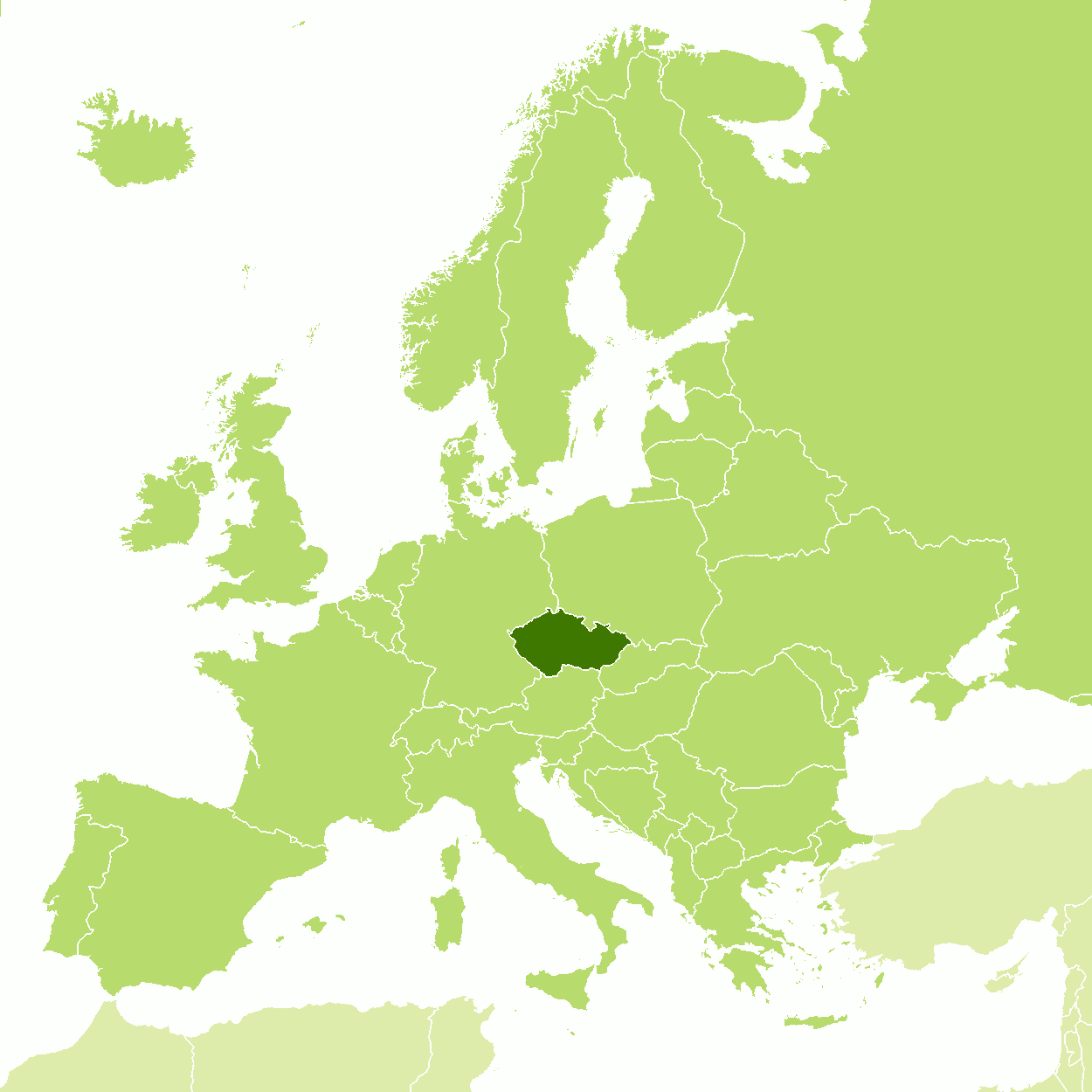
Land of stories
| Location: | Central Europe, between Germany, Poland, Slovakia, and Austria |
| Coordinates: | 49° 45′ N, 15° 30′ W |
| Size: | • 270 km N-S; 495 km E-W • 165 miles N-S; 305 miles E-W |
| Terrain: | Bohemia in the west consists of rolling plains, hills, and plateaus surrounded by low mountains; Moravia in the east consists of very hilly country |
| Climate: | Temperate; cool summers; cold, cloudy, humid winters |
| Highest point: | Sněžka 1,602 m / 5,256 ft |
| Forest: | 34.4% (2011 est.) |
| Population: | 10,702,498 (July 2020 est.) |
| Population density: | Medium (134/km²) |
| Capital: | Prague |
| Languages: | Czech (official) 95.4%, Slovak 1.6%, other 3% |
| Human Development Index: | Very high (0.900) |
| Currency: | Koruna |
